Word count: 2638. Estimated reading time: 13 minutes.
- Summary:
- The two-site planning permission for my future house build was granted, merging both sites into one. This unexpected turn of events allowed for a slightly longer house with an outhouse to be built. A thermal camera and security cameras were purchased for the site, with the thermal camera being used to diagnose faults in electrical wiring. The security cameras feature 4K resolution and can detect motion, sending alerts to a smartphone app.
Monday 4 July 2022: 22:05.
- Summary:
- The two-site planning permission for my future house build was granted, merging both sites into one. This unexpected turn of events allowed for a slightly longer house with an outhouse to be built. A thermal camera and security cameras were purchased for the site, with the thermal camera being used to diagnose faults in electrical wiring. The security cameras feature 4K resolution and can detect motion, sending alerts to a smartphone app.
I’ll do a later post with pictures etc same as before, but tonight I’m going to be talking about some of the stuff I’ve bought for the house build. Since I took title to the land, I have spent as of today €9,952 on stuff for my land. Most of it will be deployed in some way before December, so it’ll be put to use soon. However other motivations were that inflation is eroding my savings at a cracking fast rate, so swapping cash now for inflation protected stuff I’ll need anyway is wise; also a lot of the stuff comes from Aliexpress i.e. China, and therefore takes two to three months to get to Ireland. So I order it now not needing it until October. I am not allowed to clear the site until September, but my hope is immediately after that to clear the site and do an initial set of groundworks to allow the placement of a temporary site office and a temporary storage container, along with installation and activation of services. I then order more stuff with long lead times, let them arrive on site over many months, and once the recession happens and prices become predictable only then will I start asking builders for quotes. Which is certainly a year away, could be more.
Next six months in any case will go on preparing construction detail by my team of designers. I’m currently seeking a Mechanical and Electrical Designer, and for the guy I have in mind I spent most of this weekend writing up this spec document, which others may find useful, so I post it here: My Passive House Plus Mechanical and Engineering Design Brief
My first new toy for the future house build: Security Cameras
Obviously a portable cabin and a storage container sitting on an empty site will be attractive to burglars, so I’m going to need security cameras to watch over them when I’m not onsite. The same cameras should watch over my house once completed, and be able to time lapse record its construction which I think will be fascinating to watch.
I didn’t have time to research what camera to buy, so I simply headed over to https://ipcamtalk.com/ and bought whatever they currently think is the best camera. Lazy I know, but I don’t have the time to do better. They think you ought to buy a 2K camera with 1⁄1.2 inch sensor, these have best in class unassisted night vision, however I really wanted a 4K camera for that twice better image detail. They have literally one choice in their recommendations for a 4K camera: the Dahua HFW5849T1-ASE-LED, also known as the Color 4K-X.
The forum has its own reviews of this model at https://ipcamtalk.com/threads/dahua-color-4k-x-in-depth-review.58999/ and https://ipcamtalk.com/threads/worlds-first-review-dahua-ipc-color4k-x-dh-ipc-hfw5849t1-ase-led-full-color-4k-camera.57013/, and yeah they basically think it the best new camera of 2021. As it is now 2022, the previous generation of cameras has seen price discounts and I picked up two of those with 3.6 mm lenses for €530 delivered to Ireland.
I gave them a quick test to make sure that they work. Here is my living space and kitchen in 4K crisp detail, mould patches and all in superb detail. Note how well the clock’s face resolves:
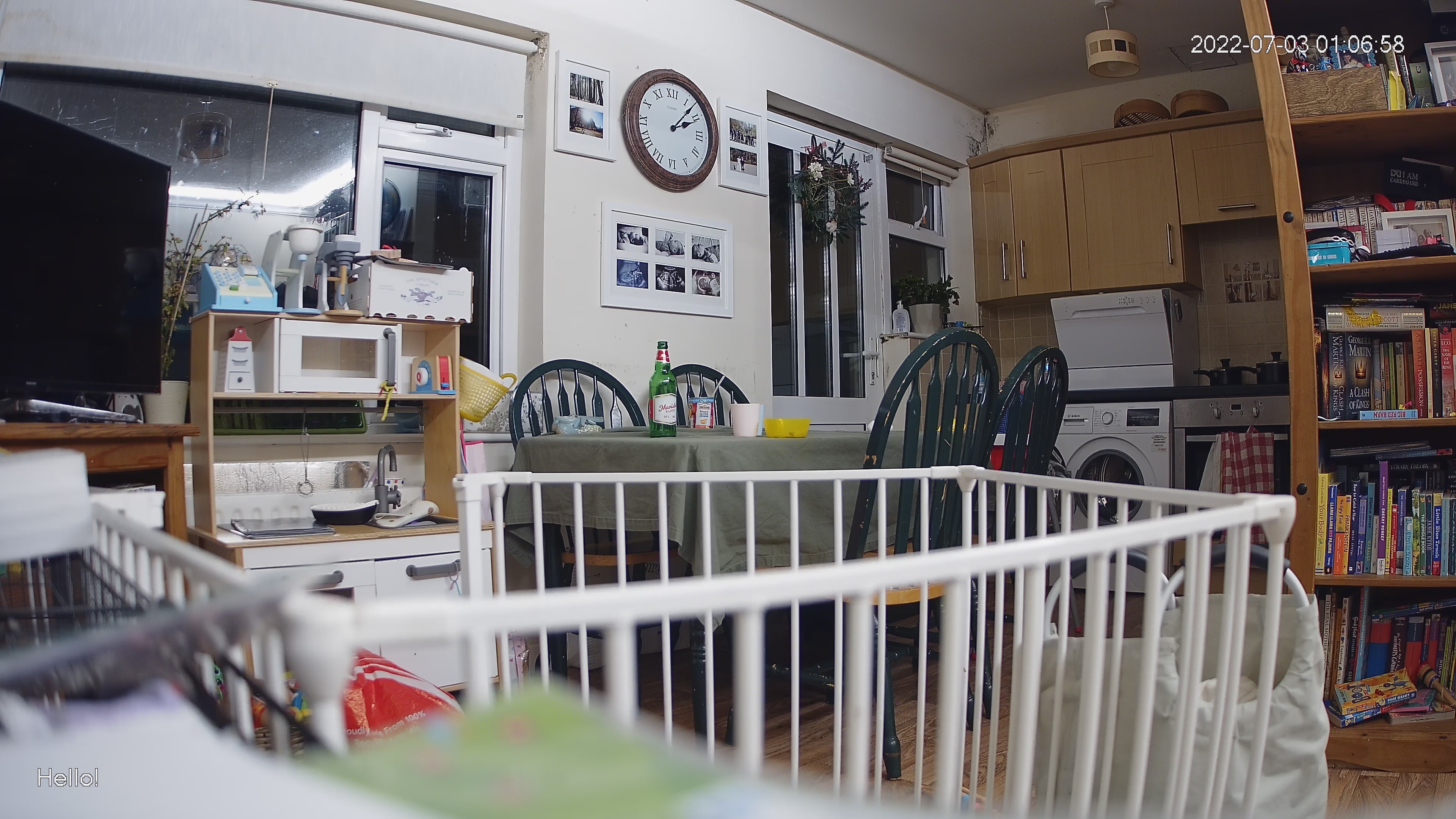
I now turn the lights off, and the camera automatically turns on its front warm white LEDs to add enough light to make a perfectly fine colour image:
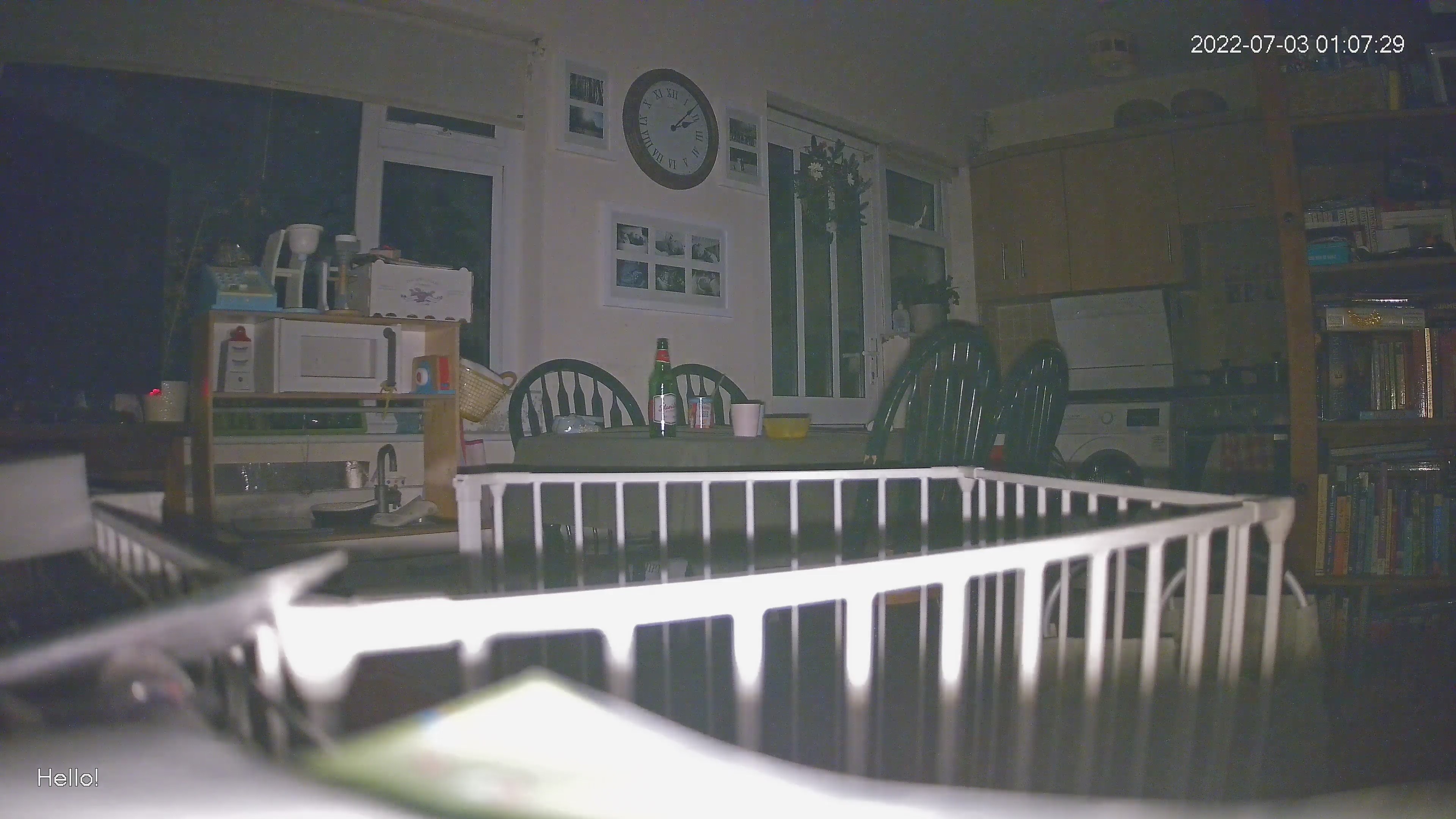
It’s a little blown out by light reflection from the child’s playpen, but yes that’s a detailed, colour, image. Let’s turn off those illuminators:
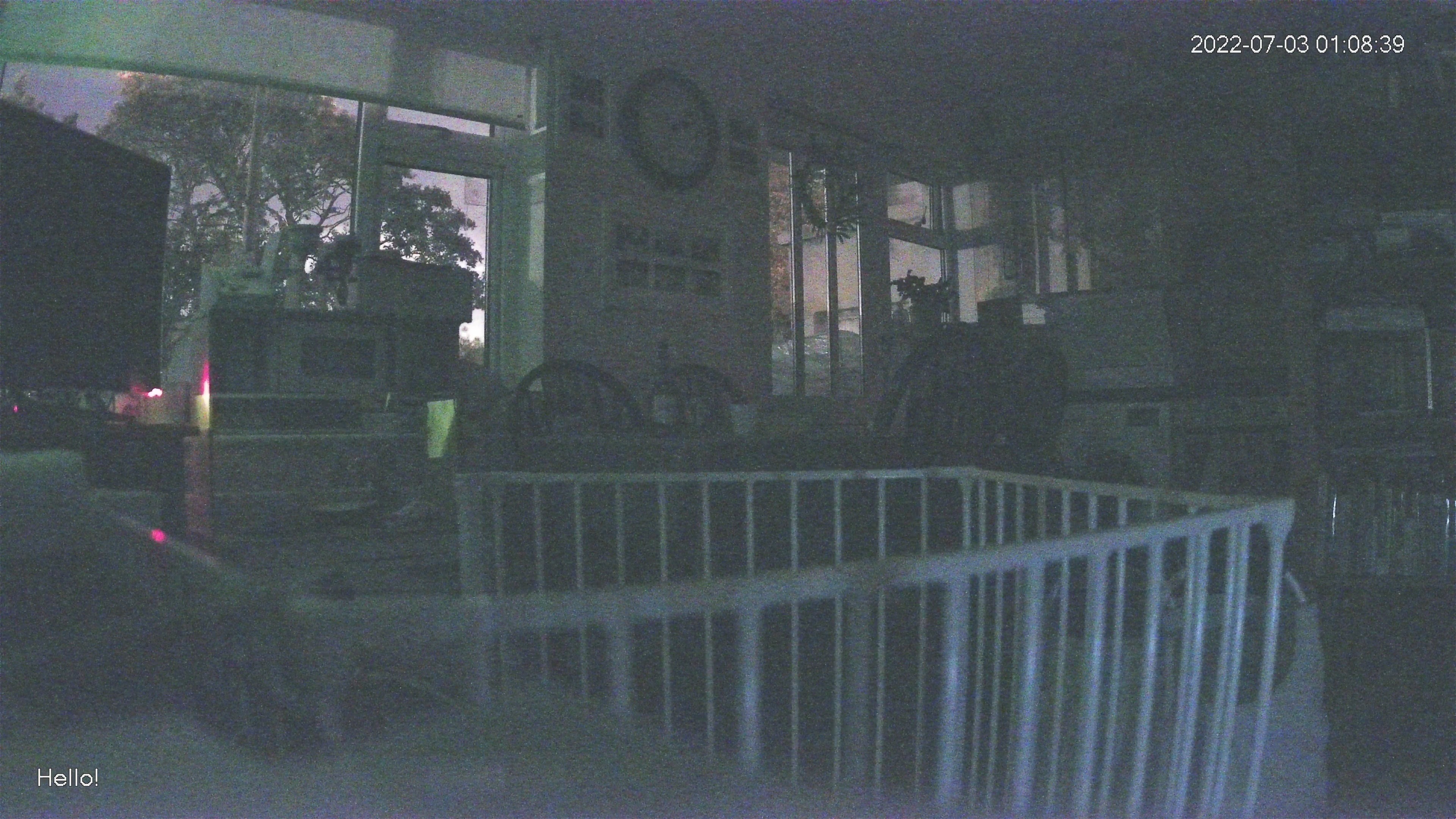
What you can’t appreciate about the above picture is that it was completely black in that room. I could just about make out the window frames. I could literally see nothing else if I closed my laptop. Yet, this camera made that picture above. In case you’re wondering how blurry motion would be e.g. due to too much sensor gain, I waved my hand in front of it and whilst there was a little blur, it really wasn’t much. That camera just sees better than humans do, more like maybe cats do. It can see when you cannot.
Also note that it’s still a colour image! Note the detail in the tree branches outside – if you give any light at all to this camera, it’ll make good use of it.
I have to say that I am impressed. Mobile phones started seeing better than humans a few years ago, but it usually came with hefty motion blur and loss of colour and resolution. We’ve now reached a stage where there is undoubtedly a floor illumination level below which you get pretty much nothing, but as soon as you get slightly over that floor, you get oodles of detail and colour. Technology is still exponentially improving in this area for sure.
These cameras have a whole bunch of other clever stuff, like they can recognise humans and vehicles entering an area within the frame and send a request for a more powerful CPU to begin analysing the picture with AI. They have two way audio, they can play a really loud alarm sound. They aren’t particularly expensive either in my opinion for fully outdoor cameras. I am pleased with my purchase!
My second new toy for the future house build: Thermal Camera
You may remember my previous post when I received a FLIR One as a birthday present, and I found it very interesting to be able to see low infrared light. It had a resolution of 160 x 120, and via unofficial Android apps it was possible to unlock a 15 Hz frame update rate. Unfortunately, it didn’t last long, within a few months it had stopped responding when connected, so I sent it back for a refund, as it was not at all cheap if I remember rightly.
Thermal cameras are extremely useful for diagnostics of certain kinds of problem, and it is wise to record the construction of your house as it goes with a thermal camera, so problems discovered later can be more easily tracked down without expensively ripping everything out searching for a cause. To that end, I needed to buy a proper professional thermal camera, and I was displeased to find that FLIR cameras remain hideously expensive. Sure, you can recoup half the cost on the second hand market when you’re done with them, but that’s still a grand or so you’re blowing there.
I thus began looking for a ‘good enough’ substitute, some of which are US competitors to FLIR, some are Chinese marks. A recent new entrant to the thermal camera market is a Chinese company called HikMicro, which may or may not be related to HikVision (I suspect it’s a wholly owned subsiduary). HikMicro are most famous for their thermal hunting scopes which have been a huge hit especially in the US, because they deliver smooth thermal video, long battery life and high resolution for a small fraction of anything else on the market. No doubt like US made thermal equipment, there is a substantial military subsidy at work there making these cheap, but I’m not complaining as you’ll see shortly.
After much toing and froing, I eventually plumped for the just released – as in, last month - HikMicro Pocket 2 camera. This has a form factor just like a normal digital camera, with a large VGA resolution LCD touchscreen on the back, and it’s similarly point and shoot. It has a low infrared sensor of 256 x 192 pixels with 40 mK sensitivity and 25 Hz frame rate, a 8 MP visible light sensor, 50 degree wide field of view (most are far narrower), 16Gb of internal memory, dual band Wifi and USB C for transferring images, and is IP54 rated. You get all that for €700 inc VAT delivered at the time of writing, which sounds like a lot and it is. However the closest spec FLIR which is the E6-XT costs almost exactly three time more, and in terms of hardware spec is noticeably inferior to the HikMicro.
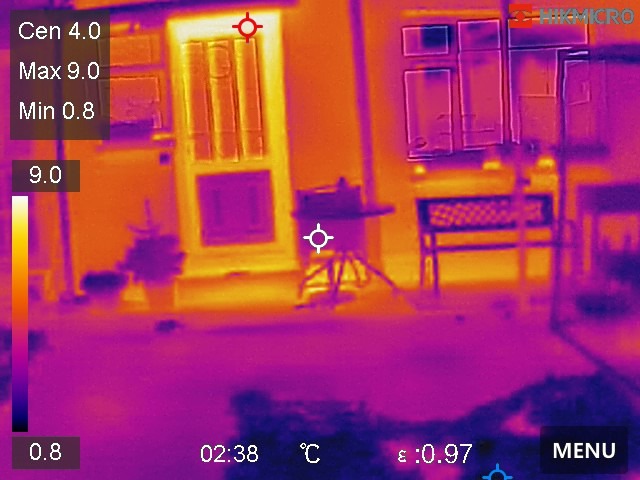
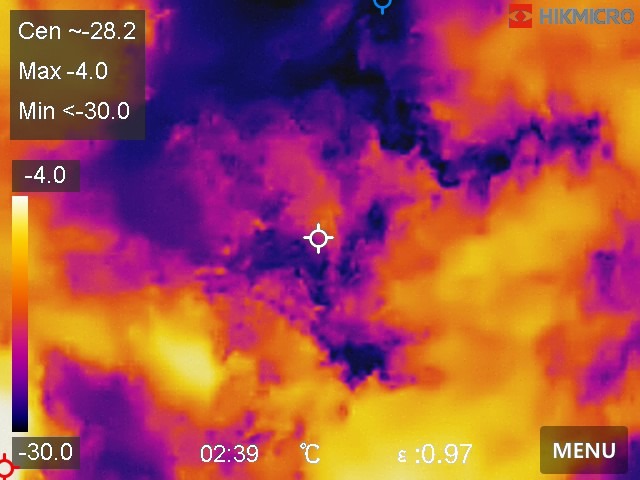
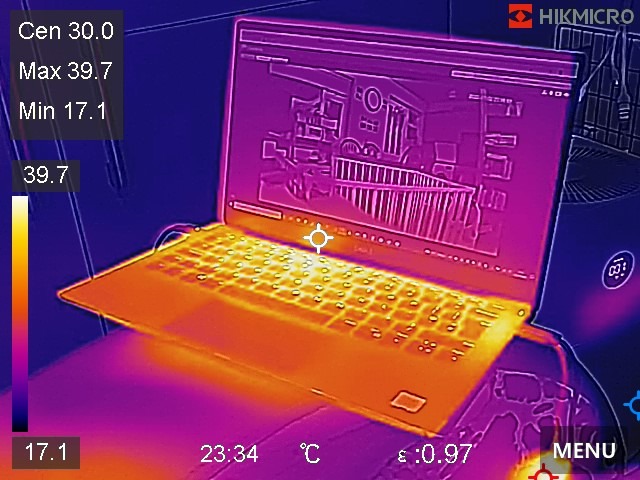
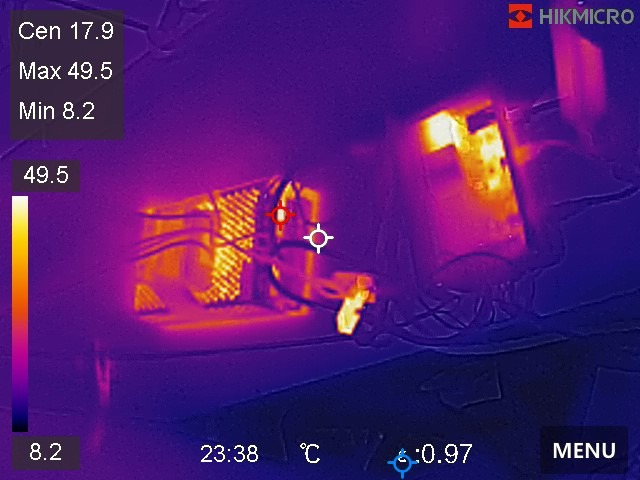
As is obvious, as a thermal camera the HikMicro is great – lots of resolution in there, often you don’t need the outlines generated from the visible camera to help recognition. You can set the temperature range manually before taking photos to ensure consistency across shots, and it’s tough to fault the hardware. The hardware is great value for money. The device feels fairly premium, a little plasticky, but definitely robust and the design is both well thought through and it looks swish as well. The waterproof membranes are a little obvious, but ensure you know it’s waterproof.
Let’s look at some images which diagnose a fault – here are the power wires leading up to my LED strip coving:
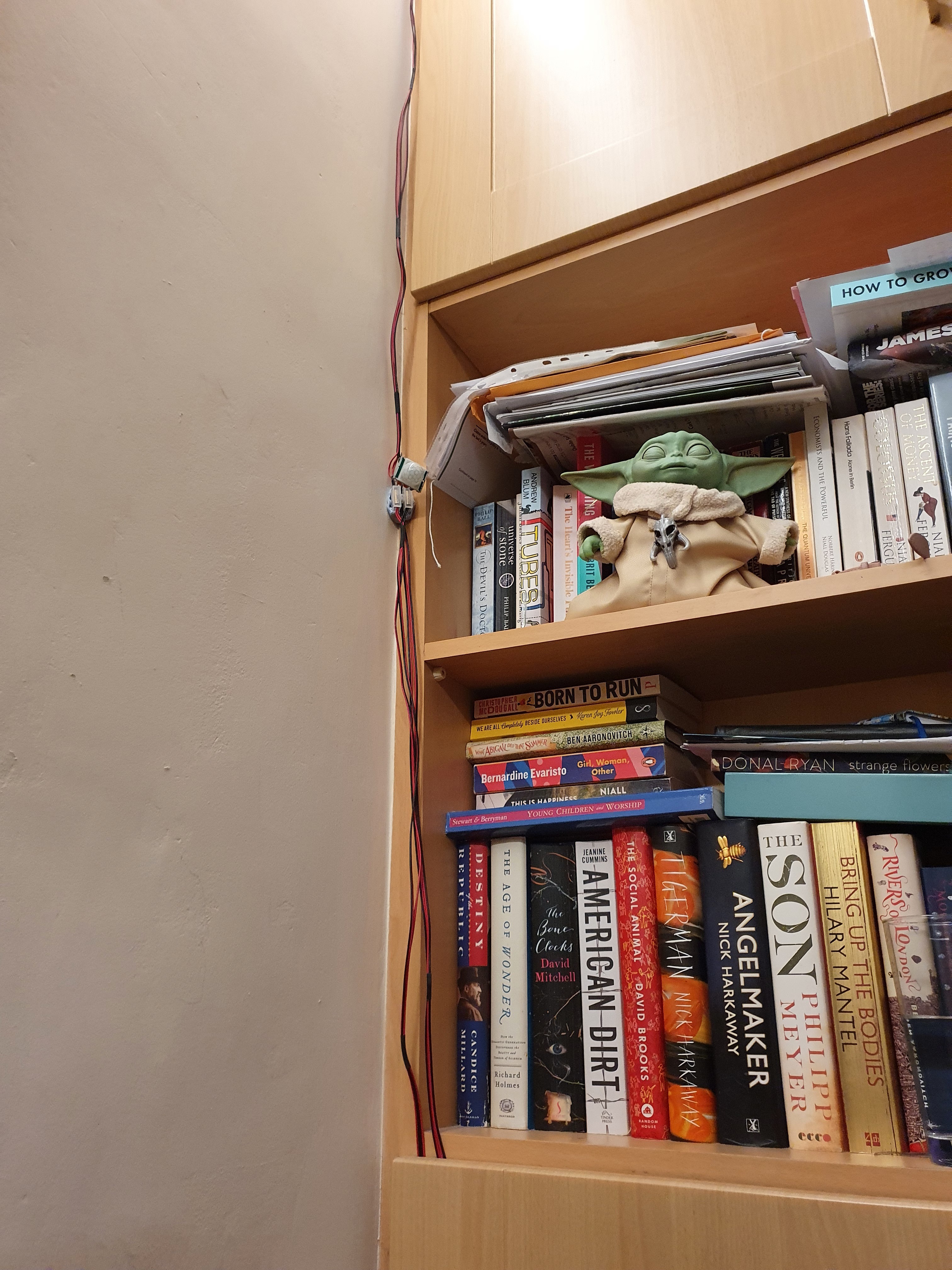
Let’s look at those in thermal:
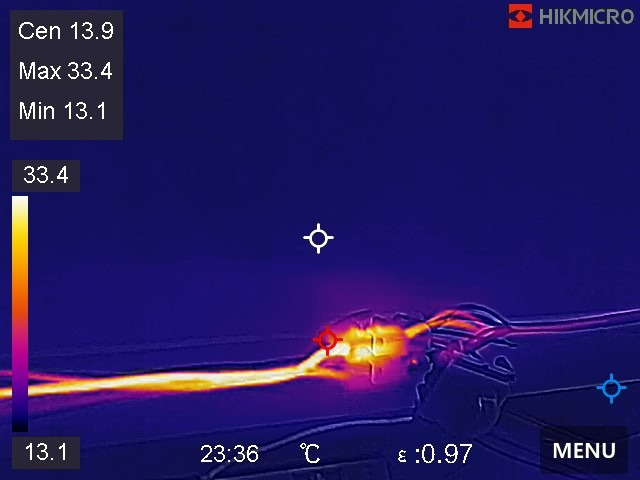
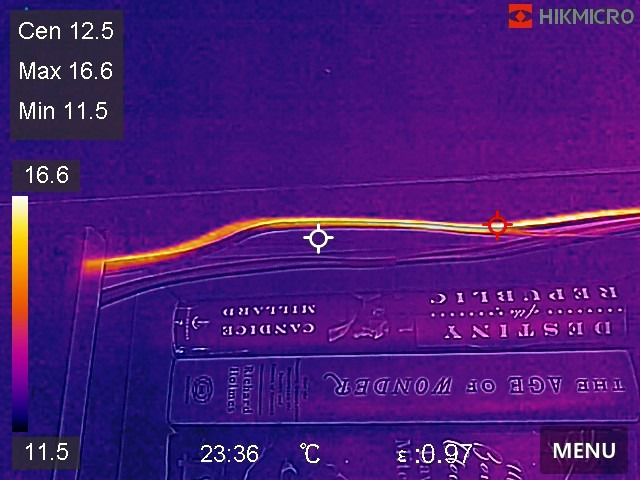
Clearly, underneath the junction only one of the pairs of wire is carrying current, and it is mildly overloading the wire, raising it a few degrees above ambient. Above the junction, both wires are carrying current and therefore their temperature is ambient. I fitted two sets of wires precisely because I knew I would be pushing towards the current limits of this very cheap wire, and one set must have gotten knocked loose. As a diagnostic tool, this camera ticks every box you need.
Really it’s the software where things fall short, especially compared to the FLIR’s software. Don’t get me wrong, if you only care about taking thermal photos, this thing is great. A particularly cool feature is the device will do Wifi Direct and broadcast its image live, so you can connect in with you device of choice and watch the broadcast, same as you would with a smart TV from Windows or Android. From that you can then take pictures or record video. Nice touch! The HikMicro app slightly extends this facility with remote control, so effectively your phone becomes a remote control for the camera, which means you can stuff your hand with the camera down into really hard to reach into spots to get the view you want, then use your phone to remotely view and control it. This is a really great feature similar to FLIR’s premium Wifi capable models, and unlike the FLIR E6-XT, the HikMicro Pocket 2 is much less unwieldy to get into crevices. Just make sure you attach the wrist strap, lest it slip from your hand!
No, what I mean by the software letting it down is mainly these issues (note I tested the latest firmware at the time of writing, V5.5.25_220511):
- The UI is somewhat clunky and poorly designed, not really making good use of the touchscreen, and whatever software filter they have on the touchscreen makes it feel resistive instead of capacitive in terms of responsiveness (and yes, I did remove the screen protector it ships with, which does help).
- There is no way of recording video on the device itself, which seems extremely odd as it clearly can pipe video with audio to Wifi Direct.
- The hardware has a good microphone and apparently has a good speaker, yet the software makes no use of either. The microphone is piped into the Wifi Direct video just fine.
- The camera clearly captures and saves the whole visible image, 8 MP resolution if you choose that in the options. You can see that separate visible image when browsing the images on the device AND zoom into it by touchscreen swipe. Yet, you cannot access that image via any other means – you cannot export it, copy it elsewhere, access it. I tried the direct connection and the app. No joy.
- For some reason the fixed touch icons to the right of the screen are duplicated in the touchscreen UI, which seems redundant. Their backlight keeps turning off instead of dimming down, so you keep forgetting they are there at all.
- Exported images are always the VGA image shown on the screen in radiometric JPEG format. You get no other choice – you can’t access the original low infrared image, you can’t access the original visible image. You can’t get a 8 MP image with the thermal image stretched over the high detail of the visibile camera. Why not export all original data if they’re being stored on device anyway?
- I very much like that when you plug the device into a PC it appears as proper USB hard drive rather than as a MTP device like modern phones do. However, using a USB-C data cable to a USB-C laptop doesn’t work, nothing is detected. Only routing the phone’s USB-C port via a USB-B socket with a USB-C converter works. This makes me wonder if the device supports USB-C at all, and isn’t really USB3 with a USB-C socket?
As this is a just released device, improved firmware will undoubtedly follow, however I wonder if they’ll bother fixing most of the above before the next hardware refresh cycle occurs, whereupon they will surely want you to buy the newer hardware instead? I note that earlier thermal cameras in their range do have some of the above missing features, so I am assuming that this is a brand new firmware platform for them, and hence it missing features. Their firmware is a 128 Mb binary, so you’d really wonder what the hell they’re shipping in it given the lack of features.
Being a cynic, I suspect the potential of the hardware will remain unrealised, which is a shame, as for my house build record I’d really like to access the 8 MP visible images accompanying the thermal images. And capturing a thermal video with sound is useful on a windy day! Stll, as a straight shooting thermal camera this model ticks the box, and I am pleased with the cost benefit having tested it. I can live without video and original resolution visible images if it saves me €1,400!
| Go to previous entry | Go to next entry | Go back to the archive index | Go back to the latest entries |